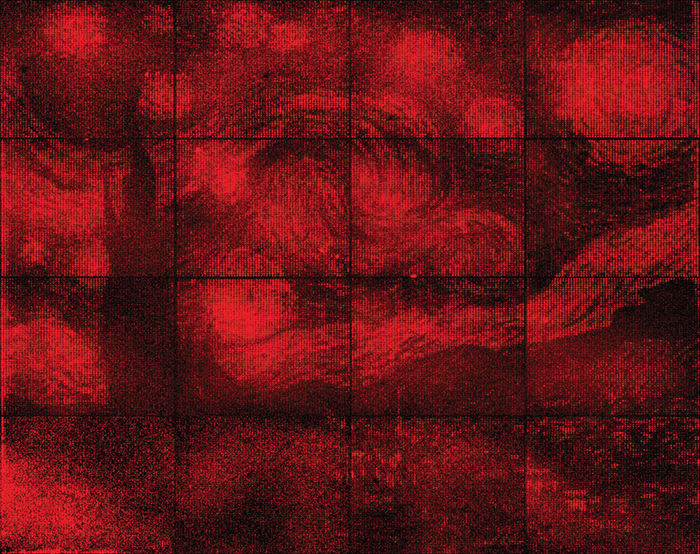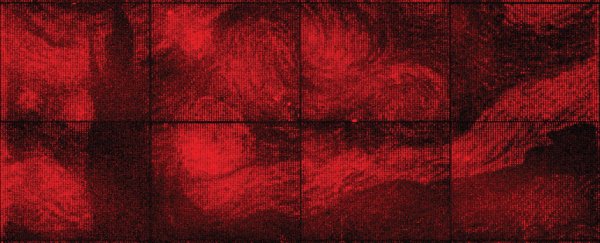Painting miniature masterpieces isn't necessarily the most obvious use of DNA strands we can think of, but scientists in the US have nonetheless used a pioneering technique to recreate Van Gogh's The Starry Night in the lab.
It's not just an impressive piece of nanoengineering, it also points to new ways of using DNA in computer chips of the future, which would be able to store more data in smaller spaces than ever before.
The tiny work of art produced by researchers Paul Rothemund and Ashwin Gopinath at the California Institute of Technology (Caltech) is just the width of a small coin across (about 18 millimetres or 0.7 inches) and packs in 65,536 pixels, with each pixel glowing a different shade of red.
That's because of the materials involved: the folded DNA strands are used to hold photonic crystal cavities (PCCs), tuned to resonate at around 660 nanometres – the wavelength for a deep red. Depending on the position of the fluorescent molecules plugged into them, different levels of light shine through, creating the image.
"It's like using DNA origami to screw molecular light bulbs into microscopic lamps," explained Rothemund.
The miniature artwork builds on techniques developed 10 years ago by Rothemund himself, and is intended to show how far the process has come since. It allows for long strands of DNA to be folded into any shape required by researchers, creating a nanoscale scaffold that could hold various kinds of materials – such as medication, carbon nanotubes, or (as here) fluorescent molecules.
 Credit: Paul Rothemund and Ashwin Gopinath/Caltech
Credit: Paul Rothemund and Ashwin Gopinath/Caltech
Because of the very small scales involved, the parts filling in the scaffold have to find their own way to their correct locations, as they can't be manipulated manually.
"Think of it a bit like the pegboards people use to organise tools in their garages, only in this case, the pegboard assembles itself from DNA strands and the tools likewise find their own positions," said Rothemund.
The trick is an electron-beam lithography technique, invented in 2009 and refined since, which sketches out a pattern on a surface that the DNA strands then stick to.
This combination of DNA folding and real-world manufacturing compatibility is something researchers have been trying to do for a long time, and such precision will be vital if we're going to make computer chips using DNA in the future – and it could eventually help in the development of quantum computing processes too.
There's still room for improvement in the technique, however, as the fluorescent molecules currently only stay lit for around 45 seconds before they burn out due to their reaction with oxygen.
"Aside from [working on] applications, there's a lot of fundamental science to be done," said Gopinath.
Not to mention questions of an artistic nature. Maybe the team could tackle a Picasso next?
The research is reported in Nature.
